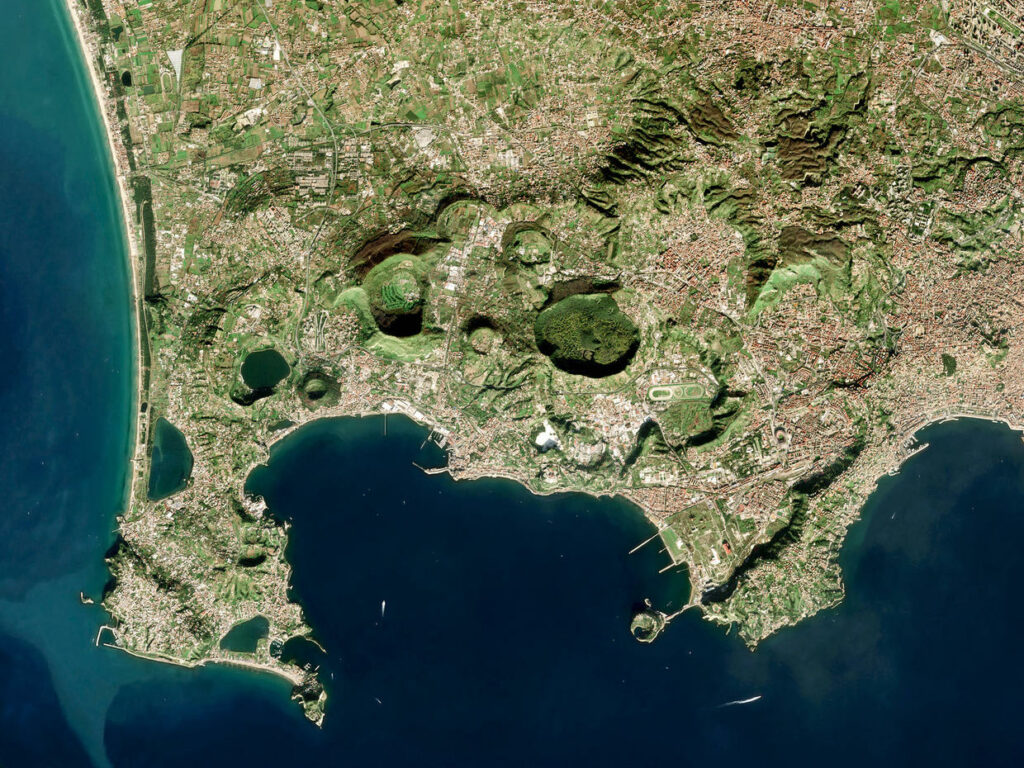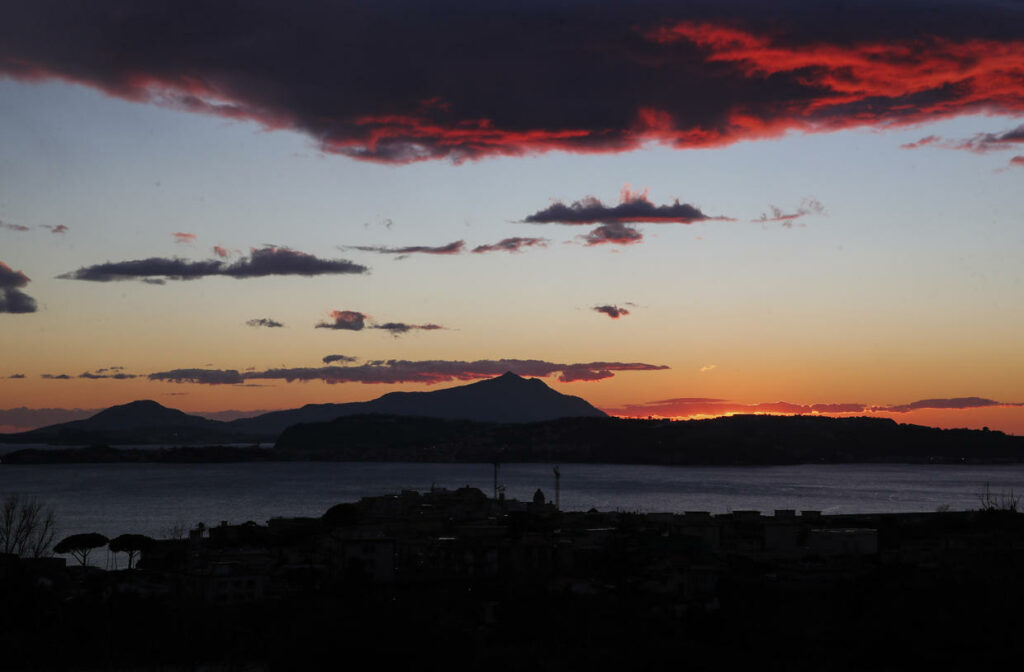
A long-dormant “supervolcano” in southern Italy is inching closer to a possible eruption — nearly six centuries after it last erupted, according to European researchers.
The Campi Flegrei volcano, which is located near the city of Naples, has become weaker over time and as a result is more prone to rupturing, according to a peer-reviewed study conducted by researchers from England’s University College London and Italy’s National Research Institute for Geophysics and Volcanology.
The study used a model of volcano fracturing to interpret the patterns of earthquakes and ground uplift. There have been tens of thousands of earthquakes around the volcano, and the town of Pozzuoli, which rests on top of Campi Flegrei, has been lifted by about 13 feet as a result of them. The quakes and rising earth have stretched parts of the volcano “nearly to the breaking point,” according to a news release about the study, and the ground seems to be breaking, rather than bending.
The earthquakes are caused by the movement of fluids beneath the surface, the news release said. It’s not clear what those fluids are, but researchers said they may be molten rock, magma or natural volcanic gas.
The earthquakes have taken place during the volcano’s active periods. While it last erupted in 1538, it has been “restless” for decades, with spikes of unrest occurring in the 1950s, 1970s and 1980s. There has been “a slower phase of unrest” in the past 10 years, researchers said, but 600 earthquakes were recorded in April, setting a new monthly record.

According to LiveScience, Campi Flegrei is often referred to as a “supervolcano,” which can produce eruptions reaching a category 8 — the highest level on the Volcano Explosivity Index. However, Campi Flegrei’s biggest-ever eruption technically ranked as a category 7, which is still considered a very large and disastrous eruption, LiveScience reported.
While Campi Flegrei — which means “burning fields” — may be closer to rupture, there is no guarantee that this will actually result in an eruption, the study concluded.
“The rupture may open a crack through the crust, but the magma still needs to be pushing up at the right location for an eruption to occur,” said Professor Christopher Kilburn, who studies earth sciences at University College London and was the lead author of the study.
Kilburn said that this is the first time the model has been applied to a volcano in real-time. Since first using the model in 2017, the volcano has behaved as predicted, Kilburn said, so researchers plan to expand the use of the model to look at other volcanoes that reawakened after long periods of dormancy. The goal is to establish more reliable criteria to decide if an eruption is likely and establish a model that can be applied to multiple volcanoes.
“The study is the first of its kind to forecast rupture at an active volcano. It marks a step change in our goal to improve forecasts of eruptions worldwide,” Kilburn said. [CBS]
FUNDRAISING: KEEP STRANGESOUNDS ONLINE!… THANK YOU FOR YOUR HELP! You can give through Credit cards, Debit cards and Paypal by using the form below.
That’s for crypto donation:
BTC: 1AjhUJM6cy8yr2UrT67iGYWLQNmhr3cHef (Network: Bitcoin) USDT: 0x490fe5d79d044a11c66c013e5b71305af0a76c1b (Network: Etherum ERC20)
You should also join my newsletter…YOU WILL LOVE IT…
Some products I recommend you to add to your preparedness plan to help and protect you and your family during an emergency:
- Protect your home and car with the best lightning and EMP protection available…
- Always filter your water at home: Use this filter to drink clean water at home!
- Health Ranger Store: Stock up on preparedness food and products to be ready for the next emergency disaster…
I recommend following Qfiles for videos, podcasts and a wide compilation of alternative news…













Any one know it’s cycle?
I understand the elders building on top of the cone.Why though is it still there?We know the consequences.
Facts lead me to believe that it’s going to blow rather than fracture.Its an awful amount of uplift to fracture.
One good thing is that after Chaitens eruption they have reclassified many volcanos from extinct to dormant.
This allows funded studies.It also allows
monitoring.Since some volcanos can set off a chain reaction in local supposedly extinct volcanos this is needed
Oh Look …….. another good news story ………. its just doom and gloom , day after day ……… ” according to this study” ………. according to that study”……….. so sick of BS ‘news’…….. ill wait until i see lava rivers before I bother with this